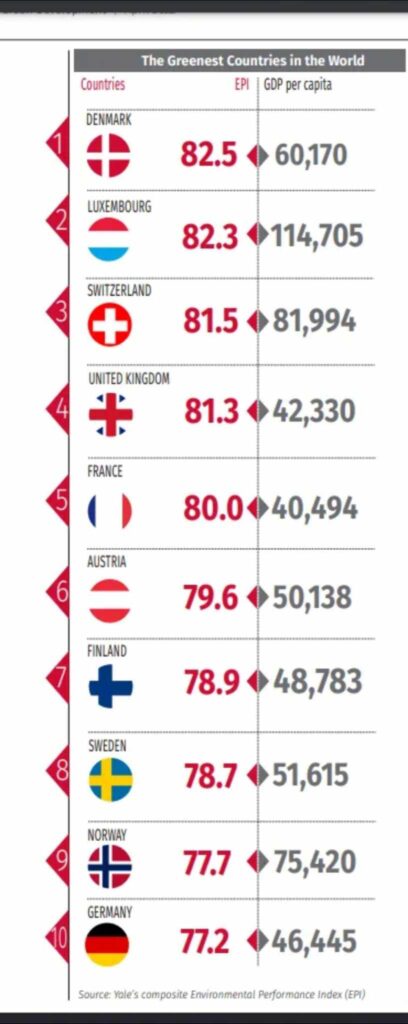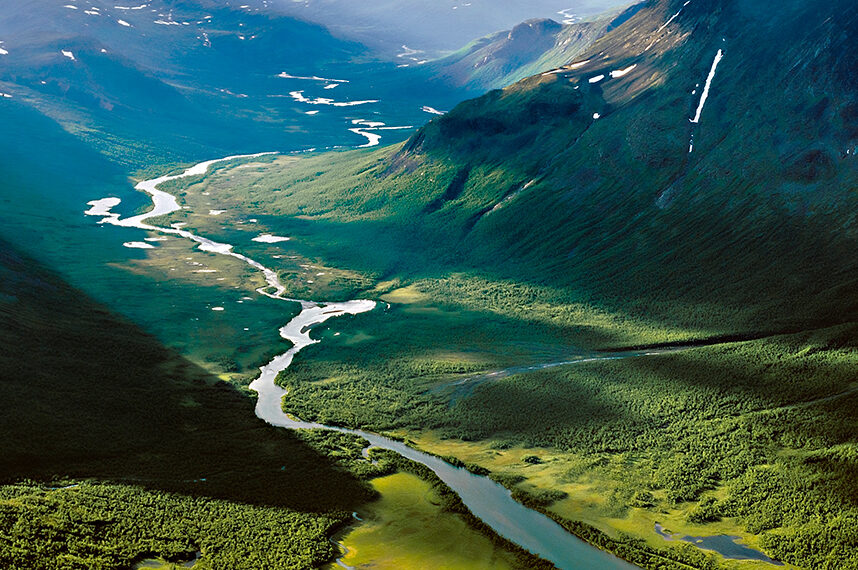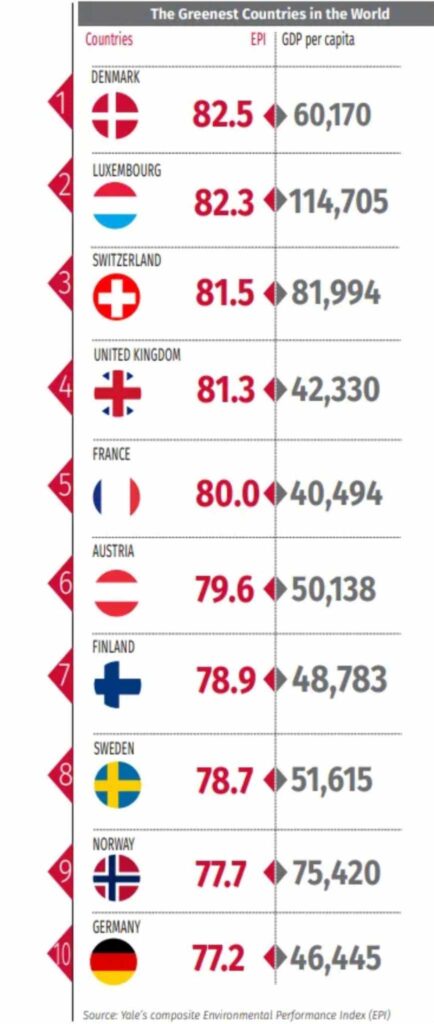The creators of a green future
Mankind is rushing forward to a green future. Therefore, a nation that first understands the value of being “green” is living more peacefully and is building a stronger economy. The Scandinavian countries, which lead the world in GDP per capita, are a clear example of this. Yale University and Columbia University, in collaboration with the World Economic Forum, have developed the Environmental Performance Index (EPI), and assesses how countries’ environmental policies and solutions are reflected in real life. Denmark is one of those countries that show the strongest and most stable growth according to this index. This country is leading the world in reducing greenhouse gas emissions, while neighboring Sweden has a perfect experience in waste recycling. Denmark, Finland, the Netherlands and Sweden are also well-known for their excellent wastewater treatment technologies. In Asia, Singapore leads in this indicator.
The goals that are protecting ecosys- tems, sustainable forest use, combating desertification, re- storing soil degrada- tion, and combating climate change are achieved at 35-38 percent in Mongolia.
The country is also a leader in other indicators of a sustainable development. Malaysia is also a good example for other countries with its green and sustainable development policies and plans. The United Nations Development Program’s ’Integrating Sustainable Development Goals into Development Planning: Malaysia’s Case and Experience’ reveals one of the ’secrets’ regarding the effectiveness of the country’s development program and funding. Malaysia uses a simulation method to estimate the funding needed to achieve the Sustainable Development Goals. For example, they pre- estimate the impact of policies and actions that support green growth, will have on GDP growth.
The fact that countries that lead the world in development are more green raises the interesting question of whether the richer they are, the greener they are, or the greener they are, the richer they are. A country’s environmental performance index can show how per capita GDP affects green, but it also shows how much a country benefits from being green. It is not easy for developing countries to reach a leading level in green development and green economies, but it is important to try and make progress from the current situation.
Sustainable Development-World Aspiration
The 2030 Agenda for Sustainable Development was first launched in 2012 at the United Nations Conference in Rio de Janeiro, Brazil. The Sustainable Development Goals are a continuation of the Millennium Development Goals, which were completed in 2015, and were officially launched worldwide on January 1, 2016, when the 70th session of the UN General Assembly approved 17 goals for sustainable development.
The 2030 Agenda for Sustainable Development is a global long-term policy document based upon three pillars of society, economy and the environment. It is not wrong to say that it is the biggest guide to prioritizing green development with sustainable development goals, as it unites countries under the goal of preserving the original image of the world and striving for social and economic development. The Sustainable Development 2021 report, processed by the United Nations, the World Bank and international NGOs, outlines how the world is once again striving towards sustainable development.

According to this report, Finland, Sweden, Denmark and Germany are at the top of the Sustainable Development Goals Index. Finland, the country topped the list with 85.9 points, while Mongolia was ranked 106th with 63.8 points. In terms of achieving the Sustainable Development Goals, countries that are close to Mongolia are Iraq, South Africa, Bangladesh and Laos. The United States, the world’s most powerful economy, is ranked 32nd with 76 points, while China is ranked 57th with 72.1 points. Kazakhstan ranks 59th and Belarus 24th out of 165 countries with 78.8 points after the collapse of the socialist system.
Countries that are leading in achieving the Sustainable Development Goals are all but one member countries of the Organization for Economic Co-operation and Development (OECD), which is noteworthy observation. With the exception of Croatia, all member countries of this organization are in the top 20. However, these countries also face challenges in achieving their sustainable development goals, and at least one of them has a “red” score, according to the report. High-income countries are not making enough progress in sustainable consumption, production and the conservation of biodiversity as well as flora and fauna.
Low-income on the other hand are facing significant challenges in eradicating extreme poverty and improving their infrastructure. Our country also faces similar challenges in achieving the Sustainable Development Goals. The goal of reducing poverty and creating flexible infrastructure is at 50 percent, while the goal of creating an industrial structure is only at 15.3 percent. The National Statistics Office also said that the goals related to the environment are well behind schedule.
The goals of protecting and rehabilitating the world’s ecosystems, sustainable forest use, combating desertification, restoring soil degradation, protecting biodiversity, and combating climate change are only 35-38 percent complete. However, it should not be forgotten that the half of the time to reach the deadline for achieving the Sustainable Development Goals has already past. If our country does not take decisive action, it will not be able to fulfill its obligations to the world in the remaining eight years. Therefore, it is time for Mongolia to learn from international best practices and experience and take decisive action.







